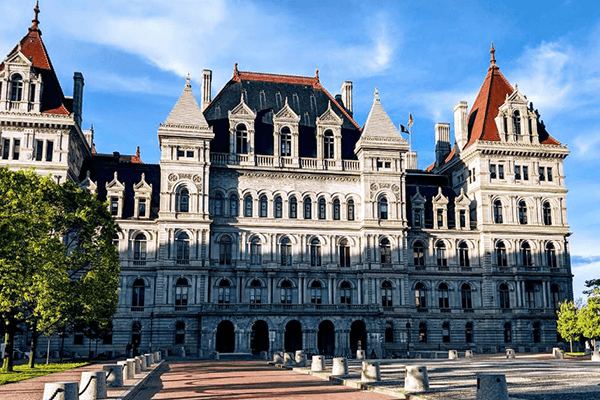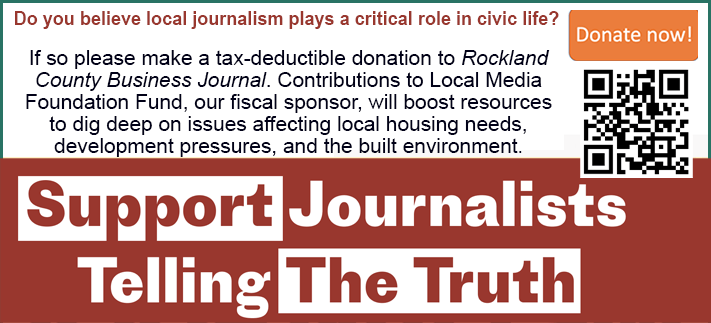|
RCBJ-Audible (Listen For Free)
|
New City Resident And Traumatic Brain Injury Survivor Says The Gap Needs To Be Rectified
By Tina Traster
On a peaceful August night in 2017, Aimee Rubin’s life changed forever. A car driving 65 miles per hour right off Route 304 in Pearl River slammed into her vehicle, leaving her with what she originally thought to be a concussion that would clear on its own. But within hours and days, Rubin, then 36, lost her ability to walk, talk, read, write, and see.
“I was automatically out of it,” said Rubin, a New City resident. “I was disoriented and having a headache when I was rushed to the hospital. “I was diagnosed with a concussion, discharged and told I had to rest at home. But not everything came at once. Several days later, people were telling me I was stuttering. I couldn’t formulate a sentence. I couldn’t read. I was falling over and seeing double. Letters looked backwards.”
Rubin was suffering from what is called post-concussive syndrome – a condition that leaves the patient with the need for ongoing care, sometimes forever. One of the lucky ones, Rubin had the support of her mother and neurologist, Dr. Mill Etienne from Good Samaritan Hospital, to help her rehabilitate.
The brain injury survivor, however, is concerned that too many like her lack much-needed ongoing and continuous care. Rubin, along with Brain Association of New York State this week is in Albany lobbying the New York State Legislature to include $1 million in the Executive Budget for the investment of Continuum of Care for Resource Facilitation for brain injury survivors. The lobbying effort is taking part during Albany Capitol for Advocacy Day.
The way it typically works is that patients must navigate the healthcare system to get further treatment and therapies for their brain injury. The Continuum of Care proposal would establish a resource facilitation and care coordination program to address the needs of brain injury survivors, their families, and caregivers after they leave the hospital and continue the road to recovery.
Survivors, families, and caregivers will have access to doctors, rehabilitation services and other community-based services, improving outcomes and preventing unnecessary hospitalizations and medical care.
Having a brain injury is a life-long condition. While brain injury survivors may seem completely fine on the outside, many aren’t. Rubin, for example, spent two and a half years in outpatient rehabilitation before she got her life back on track. To the “new normal,” as she says. Today the survivor has a full psychotherapy practice, but she continues to need assistance and help with day-to-day things such as scheduling and billing, and making sure she is not overloaded to avoid migraines and fatigue. Additionally, she pays for most of these services out of her own pocket.
“I feel very lucky to have had such support from my mom and Dr. Etienne, as many brain injury survivors have little to no help on their journey,” said Rubin. “A lot of brain injury survivors feel alone, helpless, depressed, and sometimes even suicidal. Implementing a Continuum of Care would help survivors know that they are not alone, and there are plenty of resources to help them on the road to recovery. Without a doubt, it will change people’s lives for the better.”
“It’s a tiny ask for such a big problem,” said Christina LeBeau, director of Advocacy and Engagement for the Brain Injury Association of New York State. “We are hoping to establish a database so that we can track people and their issues.”
LeBeau said her organization receives about 900 calls annually from people seeking post brain injury resources.
“People leave the hospital, and they don’t know what to do next,” said LeBeau. “It’s a very confusing system.” Add to that the diversity of needs among brain injury survivors. The director said those in the field have a saying: “If you’ve seen one brain injury, you’ve seen one brain injury.”
The $1 million boost would enable the association to hire additional care coordinators, create a data base, and to educate hospitals to include their services into their discharge planning.
“What we’re offering is hand-holding,” said LeBeau. “We want to make sure that people who’ve sustained a brain injury can maneuver through the system. That might mean helping them with waivers or assisting them with filing paperwork. We’re trying to fill a gap because once an individual sustains an injury, they don’t know who to call.”
The existing Family Advocacy, Counseling, and Training Services (FACTS) Program provides support to survivors and their families, advocating for care and community services to ensure that a plan is in place but only serves survivors whose brain injury was sustained before age 22.
The prevention and outreach aspect of the Continuum of Care program will focus on preventing brain injuries while connecting survivors to resources. Specifically, it will:
- Create a brain injury prevention public awareness campaign
- Provide outreach to target populations, including youth sports, older adults and adults sustaining concussions, among others
- Create collateral informational materials including publications on brain injury for discharge planners to distribute to patients
- Host webinars on fall prevention, recognizing brain injury and proper understanding of brain injury
- Be a hub for providers, community-based organizations and other entities, enabling them to reach brain injury survivors and families
- Perform a needs assessment to gather data on brain injury incidence, severity and financial impact in New York State, and to identify gaps in services
- Provide training to doctors who treat patients with brain injury
- Educate community-based providers with specific training on brain injury and why survivors need specialized services
- Host a conference for rehabilitation team members, including medical providers and discharge planners, on best practices for recognition, treatment, rehabilitation and assisting people with brain injury in accessing community-based support services and
- Network with medical and rehabilitation facilities to reach people with brain injury














